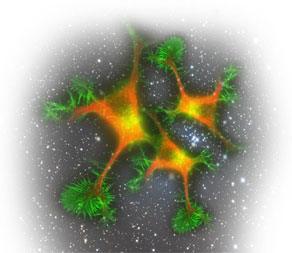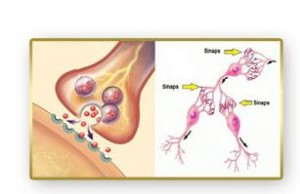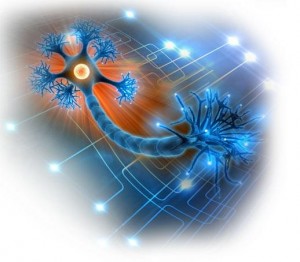By A. O.
The Selective Nature of the Nerve Cells
• What is the resting potential of the neurons and how is it preserved?
• What is action potential and how are the signals transmitted?
The nerve cells, which are called the neurons, unlike other cells, have axons and dendrites. The dendrites consist of many short extensions and look like the roots of the cell. These extensions receive signals from other neurons and the recipient cells and convey it to the body of the cell. Axons, on the other hand, are thin structures that arise from the cell body. One axon arises from the cell body and they help carry the messages to the brain. These neurons make a huge network of communication, all together.
Every cell membrane has an electrical charge and every neuron is like a tiny biologic battery ready to discharge itself. And each neuron is like a mini, biological battery ready to discharge its energy. The ions are electric-charged molecules inside and outside the nerve cells. This creates a difference in the voltage throughout the cell membrane. In order for the neurons to send signals, minus 50 millivolts (one millivolt is one in one-thousandth of a volt) is needed at an average.1 The signal is transmitted through the axon. After every signal, potassium ions are exchanged through the cell membrane. The neuron has to be recharged after every signal. To do that, the neuron gets back the ions to reach its potential value.
One neuron takes one-thousandth of a second to send a signal. This makes it possible to send a maximum of 1000 signals a second, however generally only 300-400 signals are sent in one second. The nerve cells have varying lengths in people2 and the speed of transmission is around 100-300 meters a second.3
Prof. Peter Suckling, a neuroscientist at the Downstate Medicine Center, explains his awe at the cell membrane:
“This thin cell membrane preserves the electric voltage more efficiently than any other insulating material. This is a very high insulating power. It has to be strong and at the same time, it is very thin.”4
The fact that the nerve cells can signal each other through the electricity produced in the cell membrane, the fact that they can send messages and ensure that the body functions continue, is something to be pondered upon. Furthermore, these electrical signals find the right address and make sense to the recipient cell. Every cell knows what the signal means and acts accordingly. This is a miraculous incident that has to be thought about very comprehensively. If it wasn’t for this flawless system between the cells, no living thing could survive. Then how did this system that displays an amazing intelligence and engineering come about? Surely, it is impossible to say that unconscious piles of atoms and molecules came together to build the cells and led to this amazingly engineered system between the cells. The existence of such a conscious system proves us the existence of creation in the living things. This incredible microstructure that left scientists amazed belongs to our Lord, the Creator of Everything:
“Is He who creates like him who does not create? So will you not pay heed?” (Al-Nahl, 17)
Neurons at rest
 A nerve cell is at rest when it is not communicating a signal. However, this doesn’t mean that the neuron is completely immobile. It has to be ready to transmit signals that could be received from the neighbors at any moment. A neuron that is at rest has to polarize. This means that the liquid inside has to be negatively charged compared to one outside. One nerve cell has an electric potential of around 70 millivolts across the cell membrane. This is called the membrane potential or the resting potential. Although this might seem like a small amount, it means that it produces a voltage that is equal to 1/20 of the energy in the battery of a small flashlight and creates a potential for the electricity production throughout the axon membrane.
A nerve cell is at rest when it is not communicating a signal. However, this doesn’t mean that the neuron is completely immobile. It has to be ready to transmit signals that could be received from the neighbors at any moment. A neuron that is at rest has to polarize. This means that the liquid inside has to be negatively charged compared to one outside. One nerve cell has an electric potential of around 70 millivolts across the cell membrane. This is called the membrane potential or the resting potential. Although this might seem like a small amount, it means that it produces a voltage that is equal to 1/20 of the energy in the battery of a small flashlight and creates a potential for the electricity production throughout the axon membrane.
Outside the axon, there are sodium and (Na+) chloride (Cl-) ions, while inside, there are charged proteins and potassium (K+) ions. The electrical imbalance between outside and inside of the cell creates the resting potential throughout the membrane. This imbalance created by the charged ions is obtained through the cell membrane being semipermeable for different ions. Even if the sodium, potassium and chlorine ions pass through the cell membrane, the entrance of big molecules creating an electric potential, is restricted.
However, semi-permeability is not the only solution, as the potassium ions inside the cell (K+) are always higher in number than the sodium ions (Na+), while the sodium ions outside the cell membrane (Na+) are always more than the potassium ions (K+). In order to ensure the necessary ion balance, the intensity levels in the nerve cell have to be reverted.
The cell does this using a kind of ion pump. The sodium-potassium pump is a big protein molecule that builds a channel in the cell membrane. This pump gets its energy from the ATP (Adenosine-5′-triphosphate: the cellular energy molecule that living things directly use) and after sending the sodium (Na+) ions out, accepts the potassium (K+) ions inside. Thus, it preserves the right ion ratio inside and outside the cell. In every square micrometer of the cell membrane, there are some 100–200 sodium-potassium pumps and each of them sends out 200 sodium ions while accepting 130 potassium ions inside.
Action potential and transmission of the signal
When a neuron is prompted by another neuron or the conditions, the signal starts and right after this, the signal moves along the axon and makes the cell membrane potential to be reverted. As there are thousands of protein channels or gates on the neuron membrane allowing the passage of the ions. These gates are usually closed. When there is a signal, the sodium channels are opened and the positive-charged sodium ions flow inside. This way, the inside of the cell membrane has more positive charge and the resting potential is reverted, which increases the cell membrane potential up to +50 millivolts. The reverting of these charges is called the ‘action potential’. During the action potential, the potassium gates are opened and the positively charged potassium ions flow outside. This re-balances the resting potential and the inside of the neuron becomes negatively charged while outside becomes positively charged.
A single electric signal triggers all this process. Therefore, we can say that the transmission of the signals triggers a domino effect. As each domino falls, the next one falls. After the signal is sent, the dominos stand back and get ready for the next action potential.
The molecular traffic between the nerve cells continues on a constant basis. It is the ions and some proteins that tell this traffic to move or to stop. It is surely impossible for unconscious molecules to build this amazing nervous system in our bodies and then organize it perfectly. They have come together to serve a single purpose within a system. This fascinating system in our bodies is one of the manifestations of Allah’s beautiful creation and infinite control over everything.
Synapse Paths
 The nervous system in human body is a very complex structure that consists of billions of nerve cells. These nerve cells communicate with each other and the other cells in the body through the synapses. The synapses are small sections in the neighboring nerve cells which are very close to each other, but they never touch. Since they do not touch each other, the signals do not directly pass from one cell to another, rather than that they are carried through by using chemical means which are called neurotransmitters.
The nervous system in human body is a very complex structure that consists of billions of nerve cells. These nerve cells communicate with each other and the other cells in the body through the synapses. The synapses are small sections in the neighboring nerve cells which are very close to each other, but they never touch. Since they do not touch each other, the signals do not directly pass from one cell to another, rather than that they are carried through by using chemical means which are called neurotransmitters.
When a signal is received in the first cell, this leads to the release of some neurotransmitters to the intracellular gap. After that, the neurotransmitter molecules are diffused in this gap and go to a less dense environment and bind to the recipient protein molecules in the second cell. Since the neurotransmitters and the recipient molecules have too many different types, this synapses transmission can be fast (one-thousandth of a second) or slow (one-hundredth of a second). The chemicals either trigger or stop the second cell. Therefore, the synapses serve in the nervous system either by changing the data or processing it. This is why the synpasis function in the brain is linked to learning and the memory.
The neurons receive and send messages through connections called synapsis and exchange chemicals at these points. There are one trillion connection points between the nerve cells in the brain and the molecular traffic over these connections is continuous. The ones who dictate when this traffic should stop or continue, are the ions, which are electrically charged chemicals and different types of proteins. Clearly, the fact that we can live very comfortably, that we can react to our surroundings become possible by the means of this special system that Allah created in our bodies. Furthermore, the nerve cells make only a small part of the complex system in our bodies. This system all around our bodies is one of the great manifestations of Allah’s infinite power and control. However, every detail in our bodies is created with a very special duty, by our Almighty Lord who has infinite knowledge. Our Lord says in the verses:
“Ask them for a fatwa: is it they who are stronger in structure or other things We have created? We created them from sticky clay.
“No wonder you are surprised as they laugh with scorn!” (Al-Saffat, 11-12)
Footnotes:
1- (http://www.noteaccess.com/APPROACHES/ ArtEd/ChildDev/1cNeurons.htm; [Coon, Dennis. Introduction to Psychology, Exploration, and Application. St. Paul: West Publishing Company, 1989.)
2- (http://www.noteaccess.com/APPROACHES/ArtEd/ChildDev/1cNeurons.htm; [Coon, Dennis. Introduction to Psychology, Exploration, and Application. St. Paul: West Publishing Company, 1989.)
3- (http://www.remarkablemedicine.com/Medicine/bodyelectricity.html)
4- (http://www.remarkablemedicine.com/ Medicine/bodyelectricity.html)
Even if we know or not what the synapsis cells do, or even if we forget about them, it won’t make much of a difference in our lives. However, the cells have an important duty to know these details and work with them without making any mistakes. They are very committed to their job, doing it every moment, without us even feeling it, and without mistakes or problems. These signals that are carried through doors which are opened in a split second, actually make up the invisible parts of a huge structure. Tasting an apple, smelling a rose, recognizing your mother’s voice, remembering a phone number, being able to press the button of a remote controller, being able to answer a question easily, climbing down the stairs fast, in short, everything you do in your life without thinking about it, can happen by the means of this system. And our duty is giving thanks to our Lord, Who created this system without us even knowing how necessary it is.
—————
A. O. is a Turkish writer and author.

